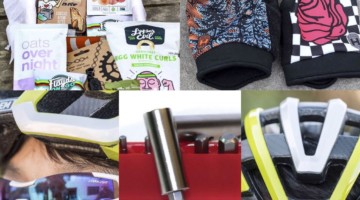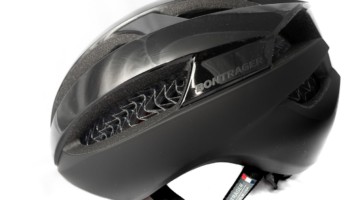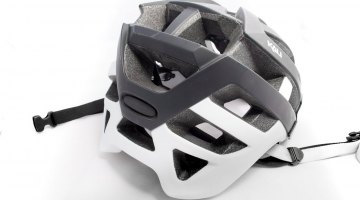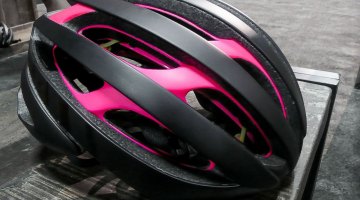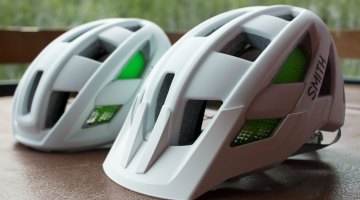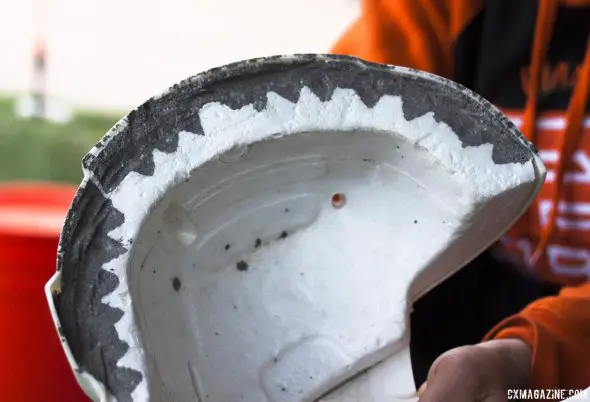
Kali’s early version of their Composite Fusion Plus technology, with energy-absorbing low-density foam cones. Kali Protectives, Winter Press Camp. © Cyclocross Magazine
If you think the biggest variables in helmets are weight, vents and fit, Kali Protectives wants to change your mind, and save your brain.
While all helmets need to meet the CPSC and CEN testing standards, Kali Protectives Founder Brad Waldron is obsessed with making helmets even safer, and has put his aerospace engineering background towards this goal. The former director of engineering at Specialized describes Kali as a “technology company” and said it is technology that allows him to make a lighter and safer helmet.
They’ve been working at doing just that for bike helmets for the last four years, and while bike helmets are their biggest market, they got their start trying to improve on motorcycle helmets, and offer some of the lightest motorcycle helmets available. Many other companies have been working to improve helmet safety, especially with MIPS technology (see our look at the POC Trabec MIPS in Issue 23, and the Lazer’s Nut’z MIPS for kids in our Gift Guide), but this is something different.
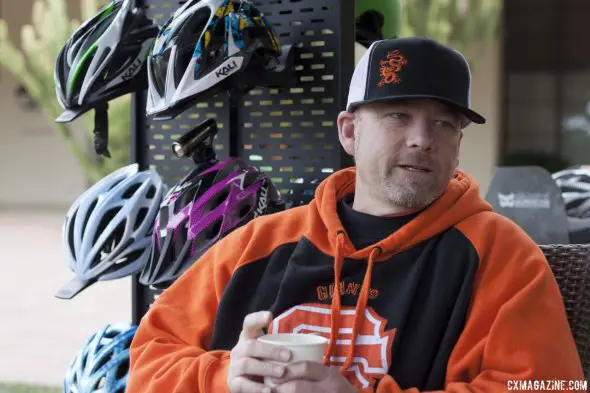
Kali Protectives’ Brad Waldron is an aerospace engineer but designs helmets to protect you should you get airborne. Winter Press Camp. © Cyclocross Magazine
Waldron has a carbon fiber background, and helped Truvativ develop some of their early carbon handlebars, but it’s not just a liberal use of carbon fiber that Waldron uses to make his helmets lighter or safer. Rather it’s the company’s goal of better dispersing any impact’s energy before it rings your bell.
The problem for cycling helmets, especially for roadies, is that they “want big-ass vents, and want to feel [their] hair blowing through,” explains Waldron. “When you do that, you only have a small place to put foam, and you’re upping the density of the foam.” The problem with that, Waldron explains, is that “your helmet doesn’t starting kicking in until you hit your head really F@&*ing hard.”
Kali address this problem in a few different ways. First, its liberal use of low-density foam that absorbs smaller impacts better before they hit your head. Kali says they use foam that is 80g per cupic liter, while other companies use foams that are 50% higher in densities.
Second, Kali uses a rigid structure around its vents (called Super Vent) so that on impact, the structure spreads the force across a greater area and allows the company to use lower density foam.
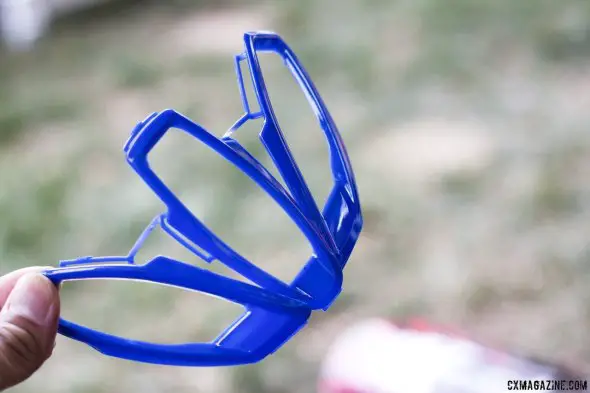
Kali Protectives’ SuperVent technology. The rigid structure diffuses the energy over a great area, into low density foam. Winter Press Camp. © Cyclocross Magazine
“We reinforced these vents, so if you hit here [at the ’cross events, imagine tripping on a barrier and hitting the second barrier with your helmet], it dissipates the energy over a bigger area, and now you’re using more foam,” said Waldron.























